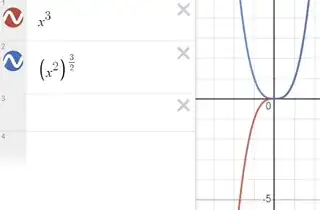I've noticed that using integration by substitution blindly could lead to some strange results. For example: with $u = x^2$, we might naively follow the usual procedure to find $$ \int_{-1}^1 x^4\,dx = \int_{-1}^{1} x^3 \,x\,dx = \int_{u(-1)}^{u(1)} u^{3/2}\,du = \int_1^1 u^{3/2}\,du =0 $$ The incorrect step here is writing $x = u^{1/2}$, since we would have $x = -u^{-1/2}$ over $[-1,0)$. If we split the original integral into one over $[-1,0]$ and another over $[0,1]$, we of course get the correct answer. However, it seems impossible to make this particular substitution in this particular problem. Certainly, there is no function $f$ such that $\int_{u(-1)}^{u(1)}f(u)\,du$ produces the correct result. Interestingly, this does produce the correct result if the integrand is an odd power of $x$.
In a more advanced course, one might account for this by saying that substitution will only work correctly if the substitution map is injective (one to one) over the domain of interest. However, having been a student and teacher of integral calculus, I've never seen this addressed (in the context of intro calculus) by a teacher or textbook. That leads me to the following questions:
Why doesn't this come up more often? Is there a conspiracy to avoid problems where this situation arises, or is this a problem that only comes up in "pathological cases"?
Why, from a pedagogical standpoint, is this not addressed?
Is it a coincidence that in my toy example, we get the correct answer when the integrand is $x^n$ with $n$ odd?
EDIT: So apparently, some teachers/texts do choose to address the issue, which I guess is not all that surprising. Still, I would be interested in hearing an argument that "skipping it is not such a big deal".
Then again, perhaps that's a better question for the math-ed SE.
